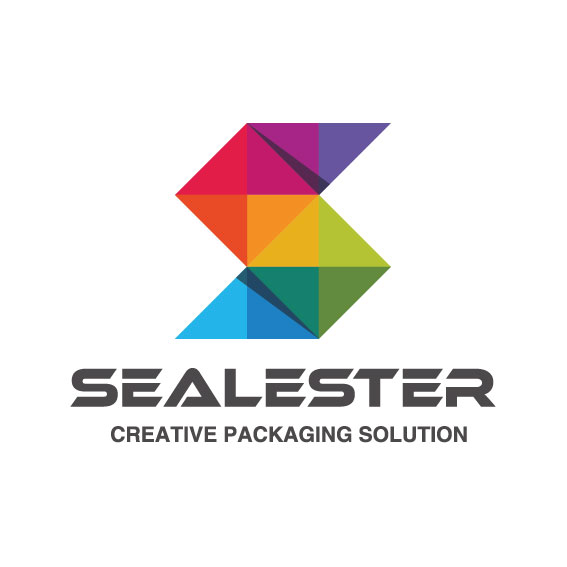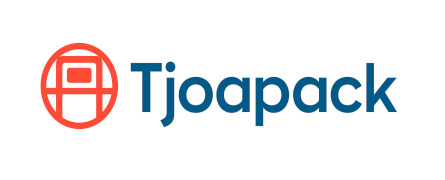Sustainability in pharmaceutical packaging: an expert panel discussion

In this written panel discussion experts in the pharmaceutical packaging industry comment on the current state of sustainability in packaging, and what can be done to improve this in the future.
The panel is made up of Julia Leonteva, Business Development and Marketing Officer at Tjoapack, Netherlands, and Queen Tannous, Research Director of SEALESTER SAS.
Julia Leonteva joined Tjoapack with professional experience in sales and marketing in the Finance and FMCG sectors. Her role saw her take care of sales operations, project management, brand management and market research.
Currently Leonteva is responsible for marketing-related activities within Tjoapack, including digital marketing, content generation and planning, PR and employer branding. She is also involved in business analytics, lead generation, and helps to cultivate strong customer relationships.
Queen Tannous has a PhD in Engineering Science, specialised in Manufacturing Process, Process, and Product Optimisation. Her role at Sealester SAS is in the development of a new sealing technology for flexible films for packaging applications.
In this discussion, each of our experts answered the following questions, giving different perspectives on sustainable packaging in the pharmaceutical industry, what they considered to be the challenges, how technology can improve sustainable processes in the manufacturing phases, and the influence of public perception on the industry decision makers.
Which areas of pharmaceutical packaging should we be focusing on to increase sustainability?
Leonteva: Packaging plays a crucial role in improving sustainability across the pharmaceutical supply chain. While there are many ways improvements can be made - they invariably all fall into one of the five following buckets:
• Manufacturing process: The manufacturing process should be optimised. This can be achieved through more diligent use of resources.
• Material selection: Choosing sustainable materials for packaging can significantly reduce the environmental impact of pharmaceutical products.
• Packaging design: There is room for improving the packaging design, particularly in terms of implementing more precise package sizing. This could lead to a reduction in the amount of leftover packaging materials following assembly.
• Recycling: A focus should be placed on recycling materials on-site and ensuring that end-user recycling is considered.
• Supply chain management: Optimise the supply chain through digitalisation to prevent waste.
Tannous: Rigid single use packaging can be replaced, for several applications, with flexible packaging. This can reduce the plastic usage in this area.
In addition, important work is still to be done on secondary packaging. It can sometimes be present only for marketing reasons, increasing the waste amount without practical or necessary purpose. Other solutions can be implemented to include marketing ideas and represent the image of the brand without adding an extra packaging layer.
What are the challenges associated with creating packaging solutions that are more environmentally friendly?
Leonteva: Finding the right packaging materials that are environmentally friendly and safe for patients can be a real challenge. These materials should have the same qualities and characteristics as the traditional types of packaging materials to prevent any forms of drug migration/ leakages/etc.
Furthermore, all pharma packaging materials are regulated and should meet certain standards in order to be approved for the market after the quality control checks (e.g. Annex 9 of the Pharmacopoeias provides guidelines on packaging for pharma products that contract packaging partners should be aligned with).
Coming up with new eco-friendly packaging solutions can affect supply chain solutions too. These solutions could come from restructuring the whole process of transportation or storage of the newly packed medicines.
Tannous: The main challenge is to find environmentally friendly materials that provide the same mechanical and chemical protection as the plastics usually used for this type of packaging. Reducing production waste during machine settings is also a challenge that is more apparent with newly created materials. More importantly, it is essential to develop recycling processes to transform all types of recyclable materials.
How can digitalisation in the manufacturing process be used to improve the environmental impact of packaging manufacture?
Leonteva: The whole production process can be optimised with the help of digitalisation. Real-time monitoring and control of all the processes can be introduced, eliminating production errors and helping with more conscious use of resources. This will be a huge step towards reducing the negative effect on the environment.
Digitalisation can improve packaging design solutions too. For example, the use of barcodes on a package instead of a leaflet would use fewer packaging materials.
The use of a digital supply chain will give more control over forecasting, making the process more precise as well as helping cut down transportation emissions.
Tannous: Digitalisation in the manufacturing process can increase production rates, as well as optimise the quality of the product and reduce production waste.
For example, Sealester is working on numerical algorithms that can be used to determine the process parameters needed to seal several types of packaging films.
On the other hand, we are also developing a new sealing technology, which allows the manufacture of innovative designs using a single tool. This digital sealing technology can be used on an independent machine to produce prototypes and small series, in order to validate the design of the package, or it can be implemented on traditional welding machines, to add flexibility in the form of the package. These usages give more flexibility to the designers to create more environmentally friendly concepts.
Do you think customers/patients are considering packaging sustainability as something of increasing importance? Is this influencing the packaging experts?
Leonteva: Due to the nature of the industry, patients tend to pay more attention to the medicine itself rather than its packaging. Furthermore, the availability of environmentally friendly packaging options for medications is limited, thus limiting patients' ability to make more environmentally conscious choices.
However recyclable, recycled, and plastic-alternative packaging materials are powerful sustainability messages.
Sustainably sourced packaging aiming to reduce the use of tree-based materials are gaining in popularity. Using materials such as bio-based plastics, hemp, recycled cotton fibre, and sugarcane board is an effective way for pharmaceutical manufacturers to show commitment to sustainability.
Although packaging companies’ use of eco-friendly manufacturing processes and materials can be far more complicated to implement than in other industries, there is still a strong tendency among them to make more environmentally conscious decisions, while maintaining the same level of product safety that will ultimately be delivered to patients.
Tannous: Environmental awareness is taking an important part in our daily lives. New laws are put in place to reduce waste. Customers/patients are also more sensitive to the impact of the products they use, as well as the packaging, especially secondary packaging. As we can see today, all packaging experts are influenced by these tendencies, and they are proposing new ecofriendly materials, ecoconception of new designs, and innovative technologies to control the quality of the products in order to reduce production waste.


Related News
-
News How GLP-1 agonists are reshaping drug delivery innovations
GLP-1 agonist drug products like Ozempic, Wegovy, and Mounjaro have taken the healthcare industry by storm in recent years. Originally conceived as treatment for Type 2 diabetes, the weight-loss effects of these products have taken on unprecedented int... -
News NextPharma Achieves Carbon Neutrality for Scope 1 and 2 Emissions
NextPharma has confirmed that it will achieve carbon neutrality for its Scope 1 and Scope 2 emissions starting January 1, 2025, marking a significant milestone in its sustainability journey. -
News 2025 Pharma Trends Outlook: Collaborative Pharma – A New Era of Supply Chains
A new year, a new Pharma Trends Outlook report! The 2025 Pharma Trends Outlook report examines key changes expected in the pharmaceutical industry for the coming year, particularly in regards to the supply chain. -
News Closing 2024 with Editors' picks of top articles from the past year
Coming to the end of 2024 and it’s certainly been a busy year, for CPHI and for the rest of the pharmaceutical and healthcare industry. Topics of conversation throughout the last 12 months have been varied, touching on the technical, to the polit... -
News SCHOTT Pharma’s sustainable journey with CPHI
Sustainability is of paramount importance in the pharmaceutical industry. See how a recent partnership between CPHI and SCHOTT Pharma has helped to highlight and accelerate their sustainability journey to reach global goals. -
News Day in the Life of a Green Chief Financial Officer
Our latest look into the daily lives of the people behind the pharma community brings us to meet Juan Jose Piedra Galan, Global Financial Planning & Analysis Manager for Galderma, otherwise known as 'The Green CFO'. -
News CPHI Milan 2024 - From the Floor
Milan and CPHI welcome you to 2024 CPHI Milan! As we celebrate the 35th edition of our flagship CPHI show, editors Vivian Xie and Lucy Chard bring you the latest from the show floor, conference sessions, and innovative solutions from all exhibitors, at... -
News CPHI Podcast Series: analysing supplier audits with the PSCI
This episode of the CPHI Podcast Series, hosted by Digital Editor Lucy Chard, goes through the results from the recent audits from the PSCI conducted on suppliers across the pharmaceutical industry, looking into ESG outcomes.
Position your company at the heart of the global Pharma industry with a CPHI Online membership
-
Your products and solutions visible to thousands of visitors within the largest Pharma marketplace
-
Generate high-quality, engaged leads for your business, all year round
-
Promote your business as the industry’s thought-leader by hosting your reports, brochures and videos within your profile
-
Your company’s profile boosted at all participating CPHI events
-
An easy-to-use platform with a detailed dashboard showing your leads and performance







